Sonoma County Terroir
The Sonoma County Terroir includes nineteen AVAs (American Viticultural Area) which define the diversity of this renowned wine region and exhibit a far greater variety of wine styles and grapes than you will find in most other premium wine areas.
From the highly regarded Chardonnay and Pinot Noir of the Russian River Valley and Sonoma Coast, to the dense flavorful Zinfandel of Dry Creek Valley and distinctive, approachable Cabernet Sauvignon of Alexander Valley and Sonoma Valley, Sonoma County’s range of geography—valleys to mountains, coastal ranges to inland benchlands—is second to none. The size and distance between these distinctive AVAs ensures individualism of wines, viticultural approaches and myriad philosophies of winemaking.
Sonoma County offers an almost unlimited range of microclimates and growing conditions within its 19 AVAs. This is unparalleled among the world’s premium winegrowing regions.
CLIMATE & TEMPERATURE
Sonoma County is blessed with an ideal long growing season, with sunny days and almost no rain from May through September. Summer average high temperatures range from the 70s to the low 90s – ideal for ripening grapes – but even in the warmer inland regions of Alexander Valley and Knights Valley, cool evening temperatures in the 40s and low 50s preserve the grapes’ acidity and balance.
ELEVATION/TOPOGRAPHY
Sonoma County’s vineyards range from sea level to 2,600 feet above sea level. The array of valley, benchland, and mountain elevations and slopes heavily influences soils fertility and grape ripening times; adding yet another variable for grapegrowers as they match the right variety and rootstock to each vineyard block’s unique growing condition.
SOIL
It has been said that Sonoma County has more soil types than in all of France. The region’s dramatic geological history has resulted in 11 major formation types, 31 different soil series within those types, and innumerable permutations within each series.
FOG/MARINE INFLUENCE
The Pacific Ocean provides a cooling maritime influence, bringing cool air through the Petaluma Gap, Russian River, and San Pablo Bay entry points that cool the western and southern regions of Sonoma County. The daily summer fog patterns are ideal for cool climate varieties.
Our Guide to Sonoma County’s 19 AVAs
ALEXANDER VALLEY
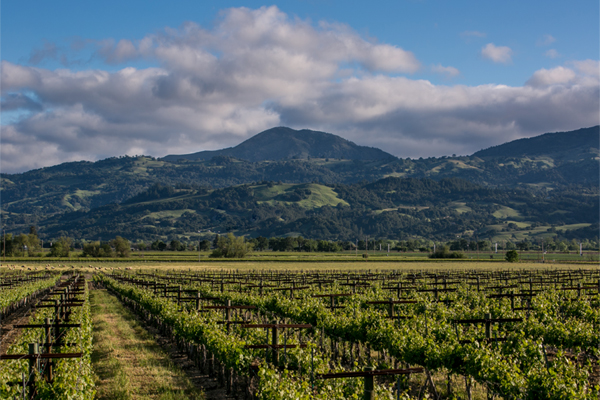
Deep in the heart of Geyserville you will find the picturesque Alexander Valley, surrounded by an abundance of stunning views, 43 wineries and many multi-generational families who have tended to this land for years. With cool marine air coming in from the Pacific Ocean, there is a chill that moves from south to north throughout the valley, making the mornings and evenings very brisk. With the heat spikes to ripen the crop and the cool down to preserve acidity, Alexander Valley is one of the most idyllic places for growing big varietals like Cabernet Sauvignon.
Earned AVA Status In: 1984 | Vineyard Acres: 15,000 | Wineries: 43
CARNEROS
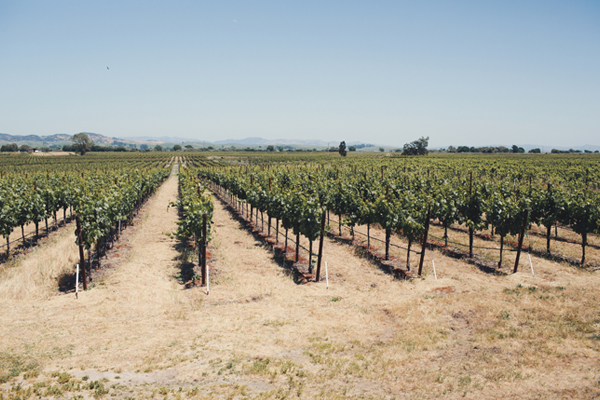
Carneros is a cool climate appellation offering up powerhouse varietals like Chardonnay and Pinot Noir, both of which excel in this world premier winegrowing region. Whether you’re interested in a sparkling or still, there is a wine for everyone in Carneros. Obtaining its AVA status in 1983, Carneros was the first wine region in California to be classified by its climate characteristics rather than political boundaries.
Earned AVA Status In: 1983 | Vineyard Acres: 6,481 | Wineries: 22
BENNETT VALLEY
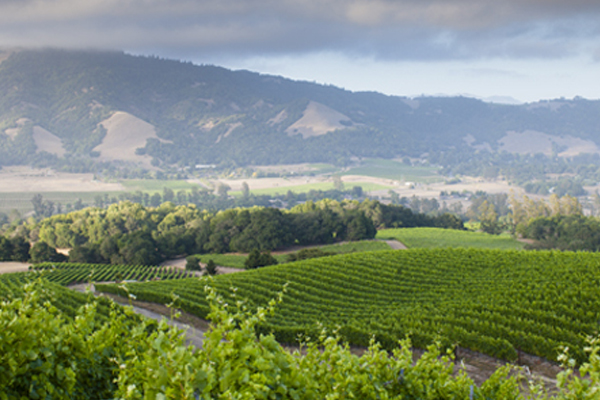
Bennett Valley is 700 acres of vineyards nudged between three mountain peaks in Sonoma County, making it one of the smaller appellations in the area. With bold reds like Merlot and Syrah, and creamy whites like Chardonnay, varietals of all types thrive in these clay-like, volcanic soils with a moderately cool climate that results in increased hang time. Located in the Sonoma Valley appellation and overlapping part of both Sonoma Mountain and the Sonoma Coast, Bennett Valley’s weather conditions make for a long growing season, especially great for growing unique cool-climate varietals.
Earned AVA Status In: 2003 | Vineyard Acreage: 700 | Wineries: 17
FORT ROSS-SEAVIEW
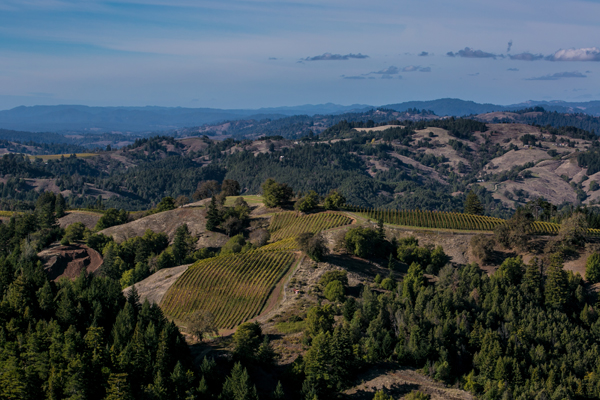
Located on the outskirts of the Pacific Ocean, Fort-Ross Seaview offers not only a coastal influence, but high elevation that sets it apart from other AVAs. Although the location is challenging to manage, the elevation and proximity to the ocean proves to be the perfect amount of exposure to crisp air, sunshine and enough stress for varieties like Pinot Noir and Chardonnay to thrive.
Earned AVA Status In: 2012 | Vineyard Acres: 555 | Wineries: 5
CHALK HILL
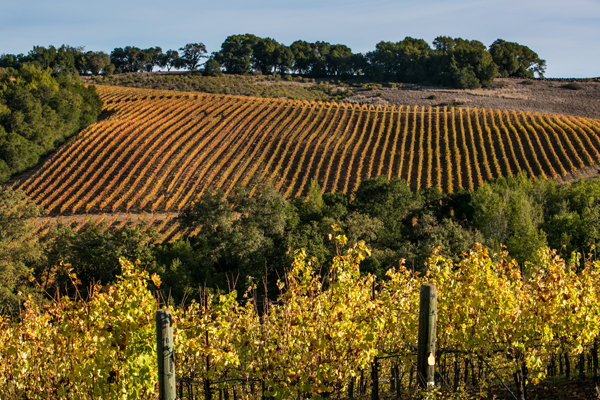
Chalk Hill is a sub-appellation of the Russian River Valley, dominating the northeast part of the AVA. While being comparable in weather patterns, Chalk Hill is somewhat warmer, with light breezes and less cool fog and temperatures. It received its name due to its rocky, chalk-like soils, one of the many elements that separates this AVA from other parts of Russian River Valley.
Earned AVA Status In: 1983 | Vineyard Acres: 1,491 | Wineries: 5
GREEN VALLEY
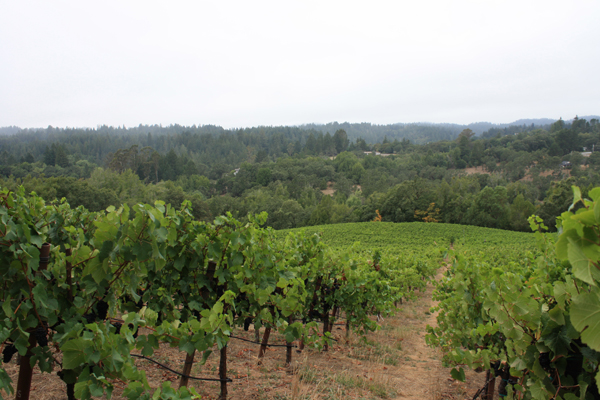
Green Valley lies in the southwestern part of the Russian River Valley, surrounded by Sebastopol, Forestville and Occidental. With 3600 acres planted to grapes, it’s very tightly delineated, both geographically and climatically, and is the most consistent of any North Coast appellation in terms of soil, climate and flavor.
Earned AVA Status In: 1983 | Vineyard Acres: 2860 | Wineries: 10
DRY CREEK VALLEY
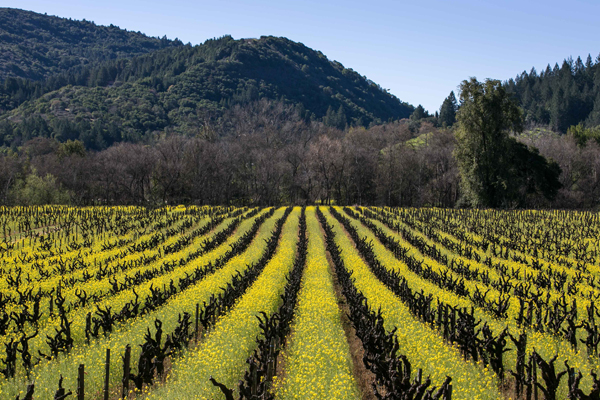
Dry Creek Valley is one of the smallest AVAs in the region, stretching 16 miles long and 2 miles wide. Despite its incredibly rocky soils, it drains exceptionally well which helps to stress the vines late in the growing season, adding varietal character. The terroir includes hillside, benchland and dense floor vineyards, creating the perfect growing environment for varieties such as Zinfandel and Sauvignon Blanc, the region’s signature wines, as well as Bordeaux and Rhone varietals.
Earned AVA Status In: 1983 (amended in 1988) | Vineyard Acres: 8,055 | Wineries: 63
KNIGHTS VALLEY
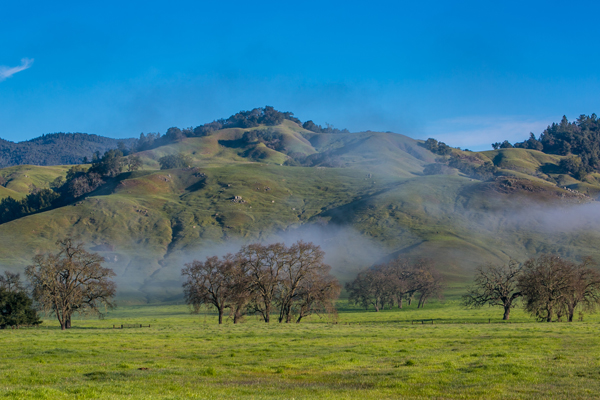
Knights Valley nestles right up next to Mt. St. Helena in one of the most rural corners of Sonoma County, offering up varietals like Cabernet Sauvignon and other Bordeaux varietals, Chardonnay and Sauvignon Blanc. The only access to the valley is through winding sections of Highway 128 through rugged terrain, illustrating incredible views and even better wines.
Earned AVA Status In: 1983 | Vineyard Acres: 2;496 | Wineries: 2
FOUNTAINGROVE DISTRICT
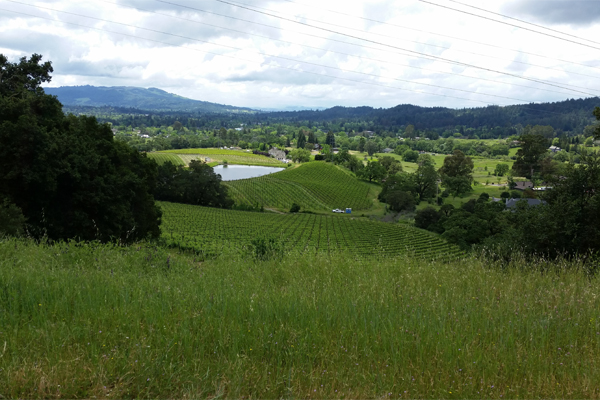
At the eastern end of Sonoma County and inland from the Pacific Coast, Fountaingrove District offers unique climate, breathtaking views and magnitude of different varieties. With only 600 acres actually planted to grapes, vineyards are typically small in size, with an average size of 12 acres and predominantly almost all family owned. With a combination of hillside vineyards, marine influences and volcanic soils, it offers a unique flavor to each variety grown in this inland AVA.
Earned AVA Status In: 2015 | Vineyard Acres: 600 | Wineries: 4
MOON MOUNTAIN DISTRICT

The “Moon Mountain District of Sonoma County” lies east of Highway 12 and spans 17,663 acres, which includes 1,500 acres of commercial vineyards planted with elevations ranging from 400 to 2,200 feet. This appellation is located within the Sonoma Valley AVA, but the Moon Mountain vintners and growers have long wanted to distinguish their high elevation wines on the labels.
Earned AVA Status In: 2013 | Vineyard Acres: 1,500 | Wineries: 4
NORTHERN SONOMA
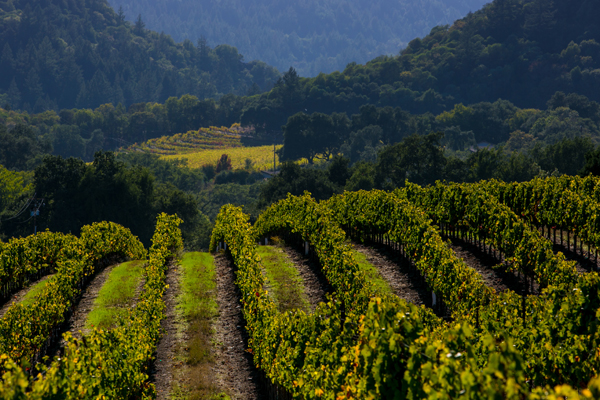
The area seems as vast and amorphous as its name, encompassing Chalk Hill, Knights Valley, Alexander Valley, Dry Creek Valley, Russian River Valley, and most of Green Valley within its embrace. The border follows Bohemian Highway in Monte Rio southeast along Dutch Bill Creek through Camp Meeker, Occidental, and Freestone, stretches along Highway 12 through Sebastopol to Fulton Road, turns north to River Road and from there traverses Mark West Springs Road to the Sonoma–Napa border. Its north boundaries are formed by the county lines of Lake and Mendocino.
Earned AVA Status In: 1990 | Vineyard Acres: 329,000 | Wineries: 0
ROCKPILE
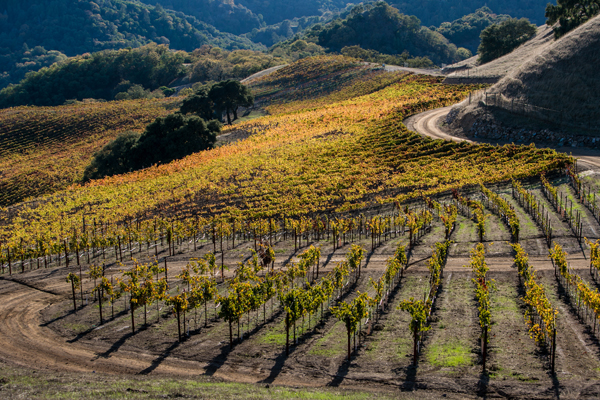
Stretching west of Lake Sonoma to the Mendocino County border, Rockpile is located on the northern part of Dry Creek Valley. It’s known for its full-bodied, red grape varietals with great concentration and balance. With elevations up to 1,900 feet, Rockpile is too far upland for the penetrating fogs that influence other Sonoma appellations. This exposes grapes to more of that California warmth and sunshine, boosting their ripeness and richness. This appellation is designated by altitude and geography, which differentiates it from its nearby AVA partners.
Earned AVA Status In: 2002 | Vineyard Acres: 192 | Wineries: 0
PETALUMA GAP
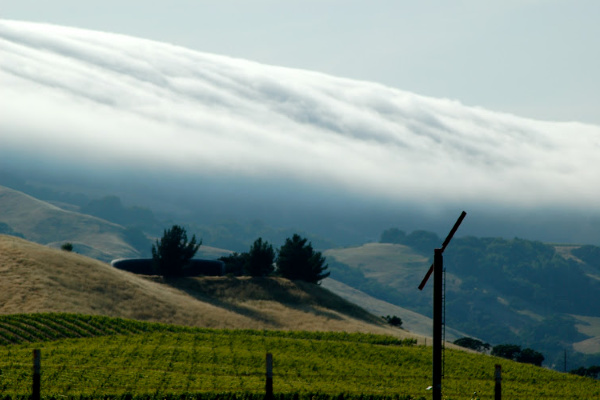
The Petaluma Gap borders West Marin and Valley Ford on the west, then follows Chileno Valley and Spring Hill Roads to Adobe Road on the east, Cotati on the north and Lakeville on the southeast. This area exhibits distinctive geography. As inland valley air heats up, it pulls the cool coastal air into a naturally formed 15-mile-wide “gap” in the coastal range mountains. Wind and fog define the area, with daily temperature swings of forty to fifty degrees. Vineyard yields tend to be smaller and grapes ripen later, developing wonderful flavors and fruit characteristics while maintaining ideal levels of acidity.
Earned AVA Status In: 2017 | Vineyard Acres: 4,000 | Wineries: 9
RUSSIAN RIVER VALLEY
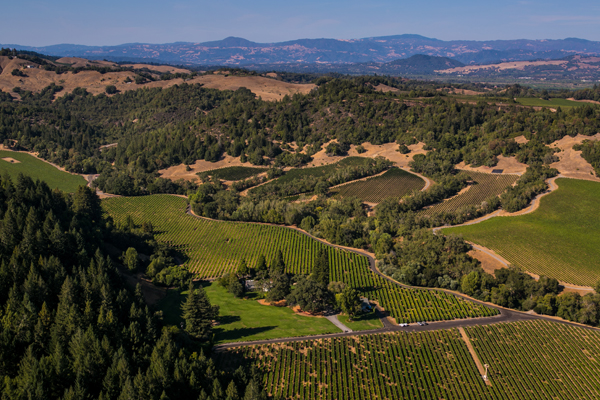
The climate in Russian River Valley is shaped by the constant cooling fog from the Pacific Ocean, coming from just a few miles to the west. Much like the tide, it ebbs and flows through the Petaluma Wind Gap and the channel cut by the Russian River through the coastal hills. The fog usually arrives in the evening, often dropping the temperature 35 to 40 degrees from its daytime high. The natural air-conditioning allows the grapes to develop full flavor maturity over an extended growing season – often 15 to 20 percent longer than neighboring areas, while retaining their all-important natural acidity.
Earned AVA Status In: 1983 | Vineyard Acres: 13,896 | Wineries: 94
PINE MOUNTAIN-CLOVERDALE PEAK
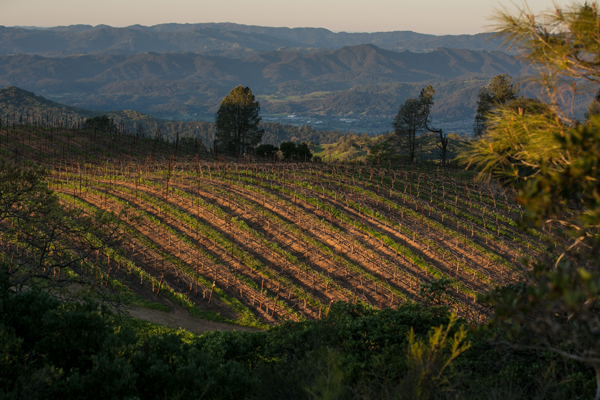
Pine Mountain – Cloverdale Peak is within the multi-county North Coast AVA and overlaps the northernmost portions of the Alexander Valley AVA and the Northern Sonoma AVA. The area currently has 230 acres of commercial vineyards, with another 150 acres under development. The distinguishing features of this area include its mountainous soils, steep topography with high elevations, and a growing season climate that contrasts with the climate of the Alexander Valley floor below. The vineyards within Pine Mountain are generally small, ranging from 5-20-acre plots of flat or gently sloping ground.
Earned AVA Status In: 2011 | Vineyard Acres: 310 | Wineries: 1
SONOMA COAST
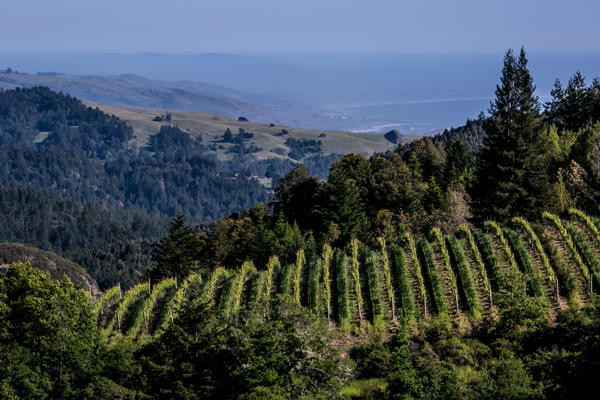
The Sonoma Coast AVA expands a good portion of the county, stretching from San Pablo Bay to the border of Mendocino County. The appellation is known for its heavy rains and cool climate, comparable to many parts of Sonoma County. Not far from the Pacific, there is more than twice the annual rainfall of its inland neighbors but can still be warm enough to ripen wine grapes because most vineyards are above the fog line. Pinot Noir and Chardonnay shine, along with cool-climate Syrah.
Earned AVA Status In: 1987 | Vineyard Acres: 4,725 | Wineries: 7
SONOMA VALLEY
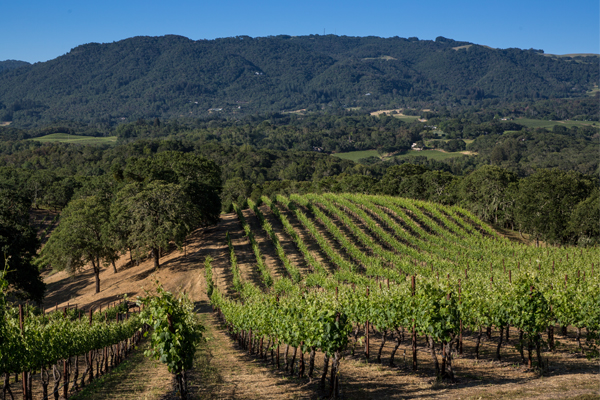
The Sonoma Valley AVA centers on the Sonoma Valley in the southern part of the county. The appellation is bordered by two mountain ranges: the Mayacamas Mountains to the east and the Sonoma Mountains to the west. Along with being the area where so much of Sonoma County’s winemaking history took place, it is known for its unique terroir, with Sonoma Mountain protecting the area from the wet and cool influence of the nearby Pacific Ocean. The Sonoma Mountains to the west helps to protect the valley from excessive rainfall. The cool air that does affect the region comes northward from the Los Carneros region and southward from the Santa Rosa Plain.
Because the valley is cooled from the north and south, it is different from other California north-south-oriented grape growing valleys in the interior. In the appellations of the North Coast, the wind is unique to Sonoma Valley and Carneros.
The soils of the Sonoma Valley, like the rest of the county are varied. One finds a wide disparity between valley floor and mountain soils; those found in flatter, valley areas tend to be quite fertile, loamy and have better water-retention while the soils at higher elevations are meager, rocky and well-drained. In general, the structure, rather than the composition of the soil, is the deciding factor where grape plantings are concerned.
Earned AVA Status In: 1981 | Vineyard Acres: 5,565 | Wineries: 100+
SONOMA MOUNTAIN
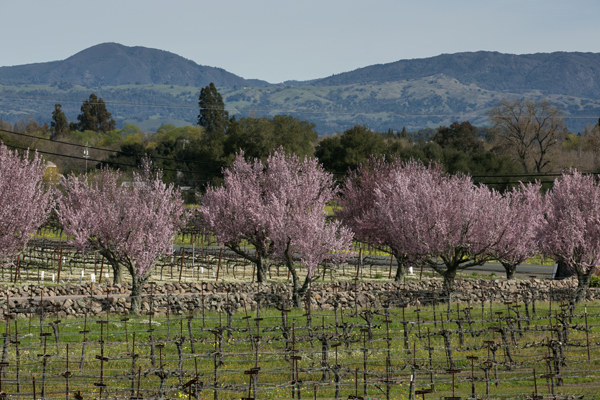
The 2,400-foot Sonoma Mountain range begins to climb above the town of Glen Ellen at the western edge of the Valley of the Moon. There are high-altitude, steep-sloped vineyards, with eastern exposures to catch the fog-free morning sun, falling within the larger Sonoma Valley AVA. However, due to the unique hillside terroir, they are entitled to use the more specific designation of the Sonoma Mountain AVA. Powerful, yet elegant Cabernet Sauvignons – the appellation’s specialty – grow here on well-drained soils. The irregular folds and crevices of the mountain slopes also create microclimates suitable for limited production of a diverse range of other varieties, including Chardonnay, Sauvignon Blanc, Semillon, as well as Pinot Noir and Zinfandel.
Earned AVA Status In: 1985 | Vineyard Acres: 667 | Wineries: 3
WEST SONOMA COAST
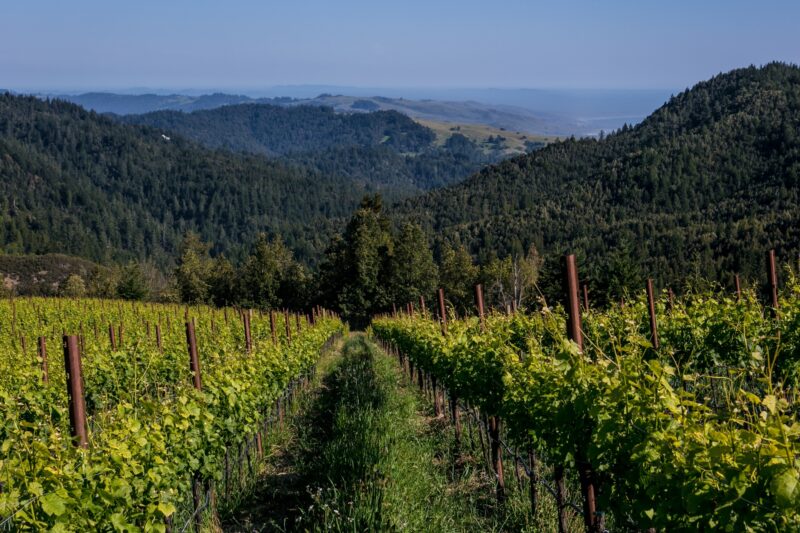
The West Sonoma Coast AVA has a diverse terroir, located on the westernmost part of Sonoma County with cooler marine temperatures and substantial fog that makes West Sonoma Coast wines extremely unique and shine through in the glass with depth, layers and elegance. Elevation of the West Sonoma Coast AVA ranges from 400 to 1,800 feet with vineyards planted on steep ridge tops along the San Andreas fault line up against the consistently cold Pacific Ocean, both above and below the fog line. As a result, temperatures are at least 10 or more degrees cooler than the rest of the Sonoma Coast AVA. Due to the immediate proximity of the Pacific Ocean, cold marine air and heavy fog create challenging conditions for grape growers, while offering distinct advantages for wine grapes. The area comprising the West Sonoma Coast AVA has a long agricultural history dating back to the 1880s, with the earliest vitis vinifera vines planted as early as 1817.
Earned AVA Status In: 2022 | Vineyard Acres: 1,028 | Wineries: 23

